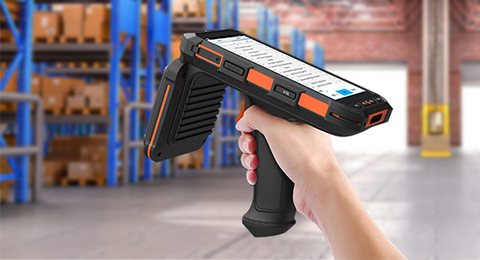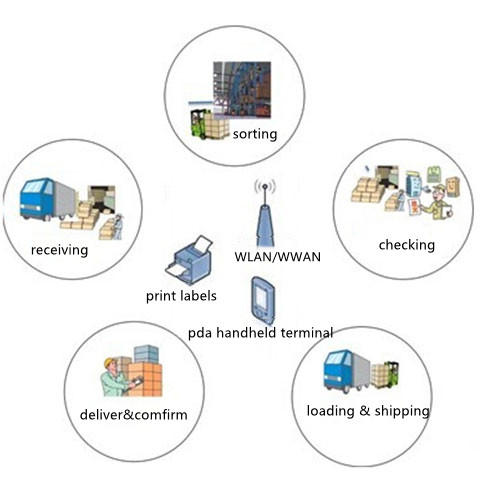400-9920-618
1. Background
With the continuous development of the scale of enterprises, the traditional manual in-out and out-of-warehouse operation mode and data collection methods have been unable to meet the efficient management needs of warehouses. The warehousing inventory system based on RFID radio frequency identification technology helps enterprises to intelligently and digitally innovate.
Disadvantages of traditional warehousing management: the low level of informatization, the continuous increase in the number of materials, the sharp increase in the frequency of in and out of the warehouse, the large management loss, the inefficiency of warehousing operations caused by excessive manual operations, and the time-consuming and laborious inventory operations. Management presents considerable challenges.
2. The basic working principle of RFID technology: non-contact automatic identification technology, the specific principle is that after the label with product information enters the magnetic field, it receives the radio frequency signal sent by the reader, and the energy obtained by the induced current is sent out and stored in the chip. product information, or actively send a signal of a certain frequency; after the reader reads and decodes the information, it is sent to the management information system for related data processing.

Advantages of RFID in-out warehouse inventory:
1. It can be identified at a long distance, instead of only identifying a class of objects at close range like barcodes;
2. No need for alignment, data can be read through the outer packaging, not afraid of oil pollution, surface damage, dark environment and other harsh environments
3. Dozens or hundreds of objects can be read and automatically scanned at the same time to achieve a quick inventory effect
4. Quickly compare data and transfer it to the background system.
5. Data encryption technology, establish a data backup mechanism, and fully escort data privacy and security.
RFID intelligent warehouse inventory process
1). Before the items are put into storage: attach electronic labels to each item, complete the labeling process, and store the unique ID number identifying the item in the label;
2). When the items are put into the warehouse: classify them according to the category and model. The operator scans and identifies the items in batches according to the model with the RFID handheld inventory terminal in their hands. After scanning, they are placed in the warehouse to complete the warehousing process, and the scanned data is uploaded in real time to server;
3). When the items are out of the warehouse: the operator takes out the specified type and quantity of goods from the warehouse location according to the delivery note or the new delivery note, scans and identifies the items in batches, completes the delivery process after checking that there is no error, and scans the data. Real-time upload to server;
4). When the item is returned: the operator scans and identifies the returned item, completes the return process, and uploads the scanned data to the server in real time;
5). Query and track cargo information: log in to the system software terminal, and quickly search for the specific information of the item according to a certain condition of the item. Process tracking.
6). Real-time statistical reports and summarization of various types of information: After the operator performs the entry and exit operations of the items through the RFID handheld reader, the data will be uploaded to the system database in time, which can realize the data summary of the item information, and provide a variety of data reports to check the incoming and outgoing items. Make multi-angle analysis of inventory situation, outbound situation, return situation, demand statistics, etc., and provide accurate data basis for enterprise decision-making.

RFID handheld terminal devices and electronic tags change the traditional manual warehouse operation mode, reduce labor costs, reduce the probability of errors and improve management efficiency, centralize data information, and update warehouse information in a timely manner, thereby realizing the dynamic and comprehensive allocation of human and material resources.